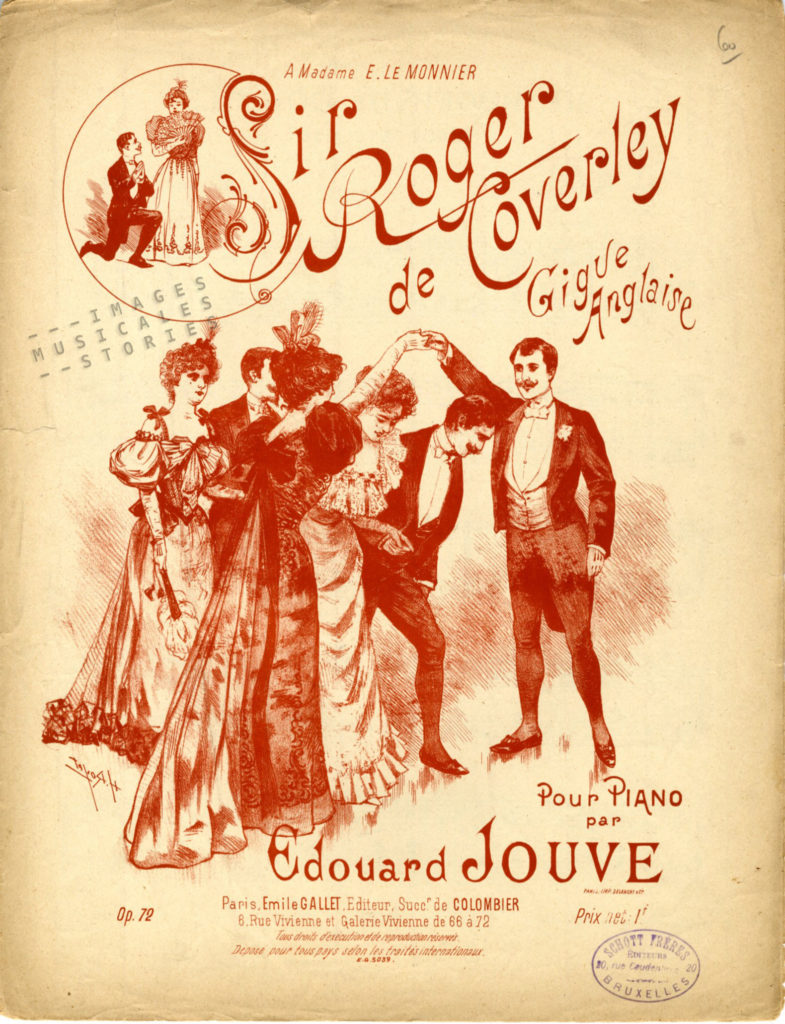
Sir Roger de Coverly is an intriguing name for a dance. Some say its name refers to a fox. Surely, the wiggly dance steps suggest the jumpy flight of a hunted fox. As early as 1685 John Playford included the instructions for the country dance in his manual The Dancing Master.
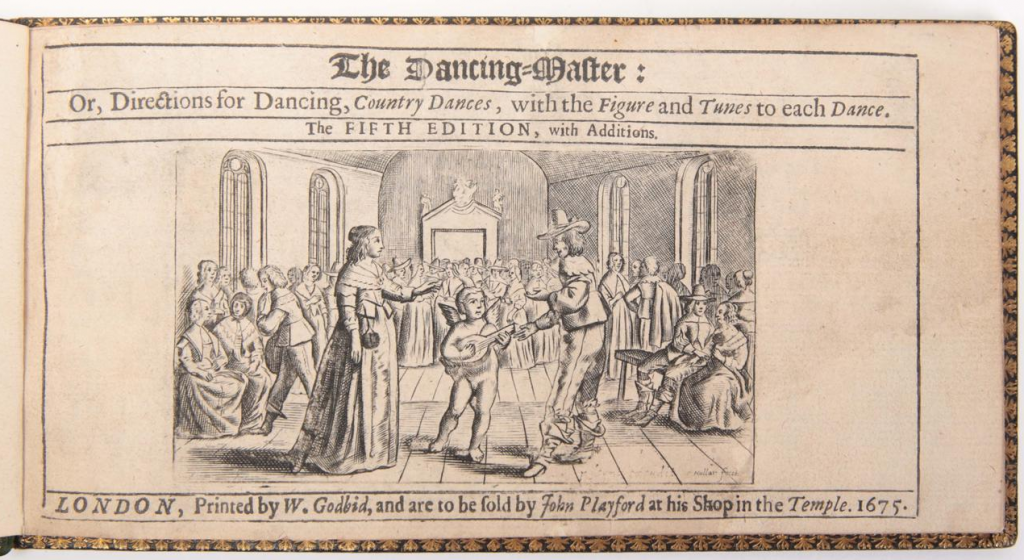
The subsequent popularity of the dance gave rise to the creation of a fictitious character, the debonair country squire Sir Roger de Coverley. In 1711 The Spectator started to daily publish the gentleman’s hapless adventures. These short pieces were entertaining portrayals of early 18th-century English life: “The first of our society is a gentleman of Worcestershire, of ancient descent, a baronet, his name is Sir Roger de Coverley. His great-grandfather was inventor of that famous country-dance which is called after him.” (The Spectator of March 2, 1711)
Fiction of course, but it led to ‘Sir’ being added to the dance previously simply named the Roger of Coverley. Moreover the Spectator articles described the gentleman as a philanthropist who always kept open house at Christmas and sent “a string of hog’s puddings to every poor family in the Parish“. Sir Roger de Coverley was thus a paragon of Christmas benevolence and charity. Possibly by association the homonymous dance became a typical Christmas dance. Often it was the closing dance of the ball: “this dance should be the finishing one, as it is calculated from the sociality of its construction, to promote the good humour of the company, and causing them to separate in evincing a pleasing satisfaction with each other.“
The Sir Roger de Coverley knew a revival in the 19th century and also became a success in the French ballrooms.
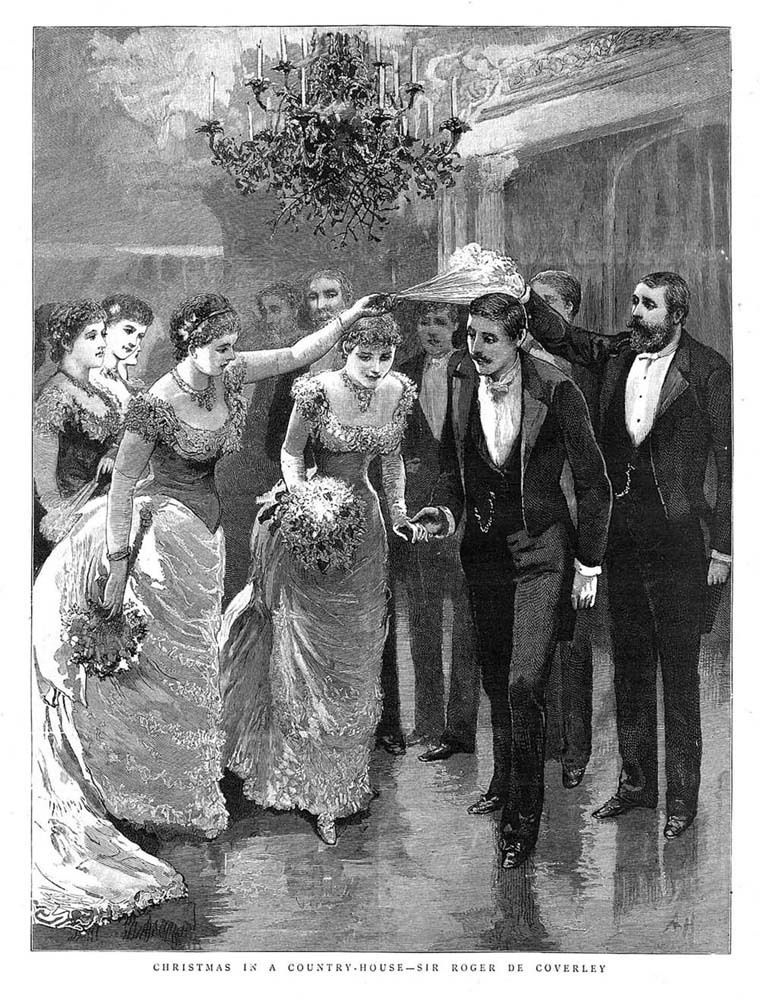
Perhaps it is this print in The Graphic that inspired Hyacinthe Royet to draw the sheet music cover that started this post. A polite image of country gents and ladies who stiffly move around under the mistletoe, wearing bored expressions. No foxy ladies and no fun at all, if you ask me.
We found a more lively rendition of the dance in a cover drawn by Barbizet. An annotation in this copy indicates that the French preferred a more vibrant dance: “In England, the jig is concluded by a lady’s chain, but the length of the dance in that case renders it monotonous and for this reason, the finale has been suppressed in France.” Strangely, the Sir Roger de Coverley was in this case sold as a Danse Américaine.
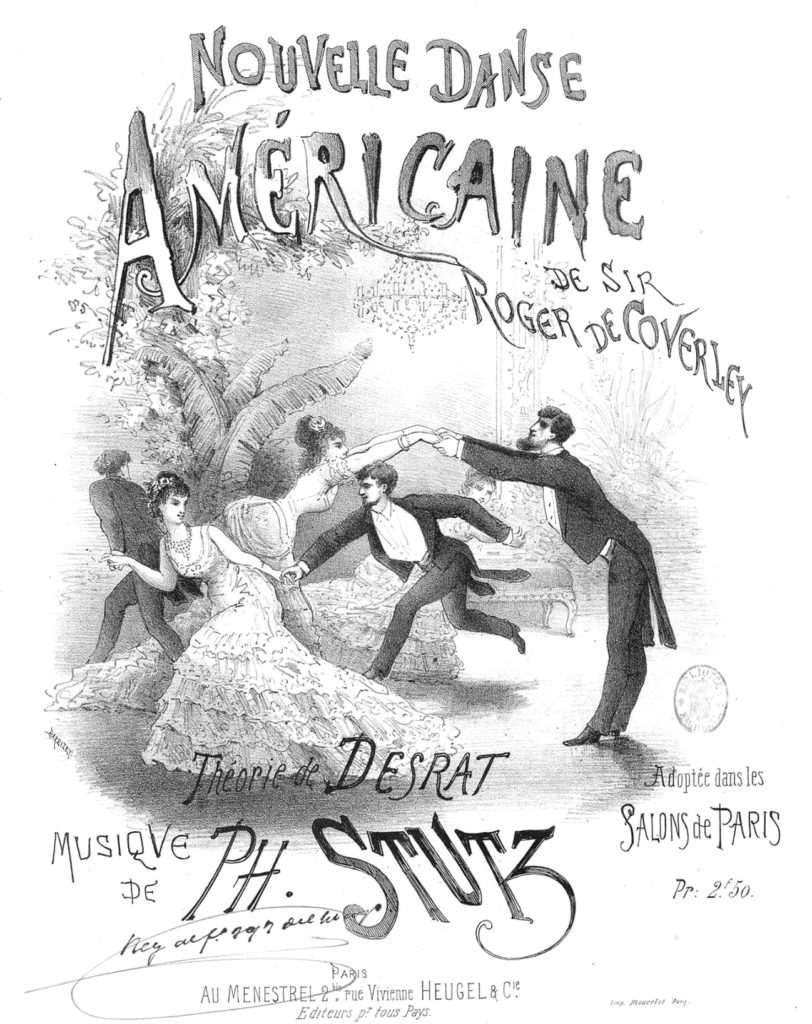
Did you wonder how to dance the Sir Roger de Coverley? The 1951 film Scrooge might give you a good idea. It is an adaptation from A Christmas Carol, the book that Charles Dickens wrote 175 years ago. The fragment begins with the spirit showing to Ebenezer Scrooge the annual Christmas party thrown by his former employer, old Mr. Fezziwig.
Just tap your feet in time to the music and enjoy the Yuletide dance. Beware, this version is danced at a very swift pace.
Interestingly, in 1922 the English composer Frank Bridge arranged the folk song for a string quartet. To enhance the Christmas mood the composer mixed in the Auld Lang Syne melody (at around 3’50”).
I, for my part, will blithely put on my skates and dance the Sir Roger de Coverley on Ice. Merry Christmas!
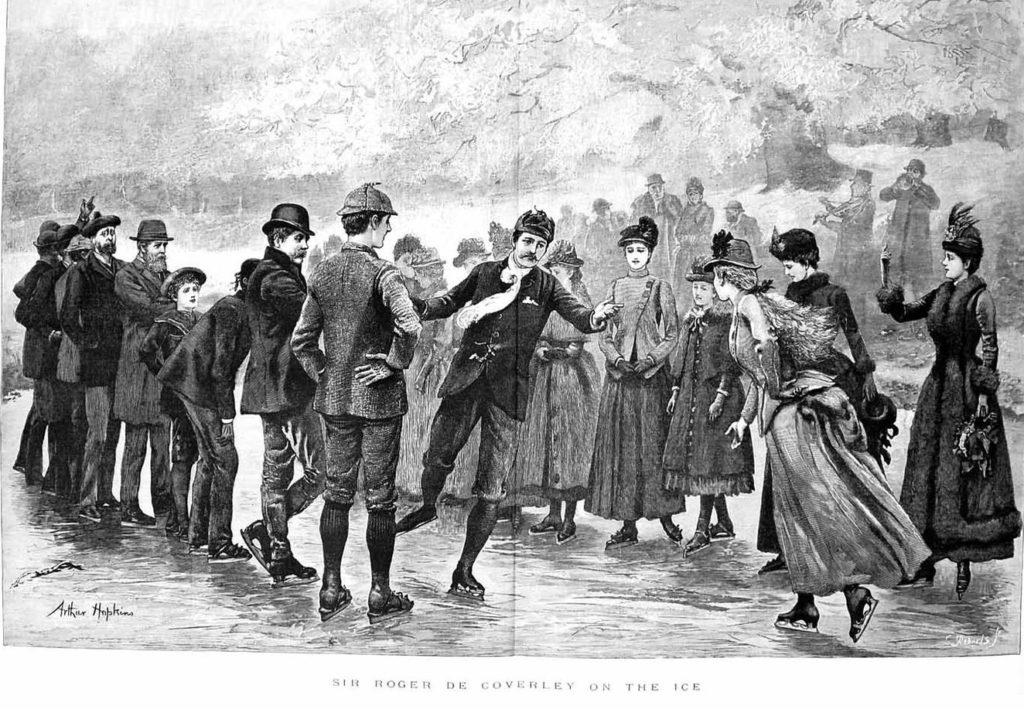

Thank you for that very informative article. I had never noticed how “Sir Roger of Coverley” is deeply linked with the Christmas traditions.
Did you know that it is also the dance danced by Scarlett o’Hara at the Atlanta Bazaar in “Gone with the Wind” (1939)?